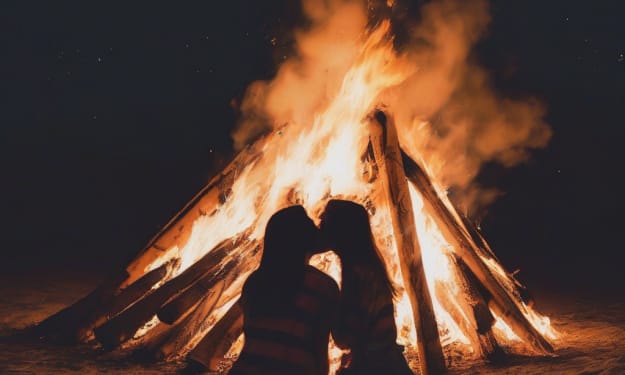Defining Erotic Art through Photography
The debate rages on, defining erotic art and what differentiates it from pornography.

The following text is an excerpt from David Steinberg’s This Thing We Call Sex: A Radically Sensible Look At Sex in America.
Given that more and more people see sex as an important and complex celebration of what it means to be fully alive, it’s hardly surprising that increasing numbers of artists—photographers, perhaps, foremost among them—want to say something significant about sex through their art. If sex is about something much larger than a bunch of nerve endings in pursuit of physical release, if sex is not some devilish force threatening to overturn moral decency and social propriety, then sex is precisely the sort of profound human experience that has always been the subject of true artistic exploration, the sort of human experience that needs the language and insight of artistic reflection to help us better understand both life and ourselves.
Although it seems to be one of the art world’s best-kept secrets, beginning in the late 60s and early 70s and gathering real momentum since the 90s, skilled and perceptive photographers have been producing a broad range of magnificent images of people having sex. These images, which I call fine art sexual photography, have nothing to do with the repetitive, clichéd, fantasy formulas of commercial pornography. Rather they are images that address sex with intelligence and respect—that invite us to look at sex with wonder, laughter, passion, and tears—from a place of appreciation of the emotional complexity of this basic and controversial aspect of being alive.

Photo by Henrik Purienne
Henrik Purienne (1977, South Africa) is a film director, and founder of Mirage Magazine. Based in Cape Town, he began his career making documentary films. His influences included a realist aesthetic of filmmakers like Eric Rohmer and John Cassavetes.
That so little is known about this body of work is a testament to the sexual phobias of American culture in general, and the political, cultural, and sexual conservatism of gallery owners, book publishers, magazine publishers, and museum curators in particular. Photographers whose work addresses sex directly continue to be spurned by mainstream art venues for their sexual imagery even as they are simultaneously rejected by commercial pornography for their emotional and aesthetic depth.
To be sure, there’s nothing new or noteworthy about taking photos of sex, or about publishing sexual images per se. Explicit images of sex have been popular and lucrative contraband from the very first days of photography, and today the entire world is in a flurry over the abundance of sexual imagery available to one and all—children as well as adults, fundamentalists as well as hedonists, villagers in third-world countries as well as big-city Western cosmopolitans—at tens of thousands of extraordinarily popular, generally artless, porn websites.
But the fine art sexual photography I’m talking about is unrelated to commercial pornography in just about every way except that both involve a photographic depiction of sex. Most fundamentally, fine art sexual photography and commercial porn have radically different purposes. The fundamental purpose of porn is to provide fantasy images that arouse the viewer—traditionally as an aid to masturbation, now frequently as a precursor to partner sex as well. The purpose of a fine art sexual photograph is not to arouse (though arousal may be part of a viewer’s response), but to make an artistic statement about sex. As photo critic A. D. Coleman has put it, “A quality fine art sexual photograph has something to say over and above, ‘Oh, look, sex is happening and we get to watch!’

Photo by Helmut Newton
At the age of 16 Helmut Newton apprenticed for fashion photographer yva, neé neuländer in Germany. Two years later he flees Berlin as the violence and hatred was inevitably leading to war and tragedy. Arriving in Singapore with two still cameras he smuggled out. Soon thereafter he starts his career at the Singapore Straits Times. Years later his black-and-white erotically charged photos would be a mainstay at Vogue and various other fashion industry publications.
What that statement is, will vary from photographer to photographer, as is always the case when art addresses a subject of common interest. As with any artistic genre, there will be work that is complex and work that is simplistic, work that is imaginative and work that is derivative, work that is amateur and work that is well-crafted, work that is pleasing to view and work that is disturbing. What these fine art photographic offerings have in common, and what makes them so different from commercial porn, is their desire to engage the viewer in a meaningful exchange about sex, beyond the obvious, beyond the routine.
We so completely associate sexual photography with pornography that we have trouble even imagining that sexual photography can exist outside pornography’s glitzy, titillating, rebellious glare. The idea that the thoughtful, complex sensibilities we associate with fine art can be directed unapologetically toward sex, through as dramatic and powerful a medium as photography, is alien enough to throw many into fits of cognitive dissonance. Sexual photography that is fine art? You’ve got to be kidding! We all know that art is high, sex is low. Art is subtle, sex is blatant. Art is refined, sex is crude. Art is public, sex is private. Art is beautiful, sex is, well … embarrassing. Or so we’ve been told, verbally and nonverbally, since long before we were old enough to understand the rules and attitudes we were being taught to honor and obey.
But during the last 50 years, the anti-sexual subtext of our peculiarly pleasure-fearing U.S. worldview has been challenged by tens of millions of increasingly explorative and outspoken everyday people—people whose sexual attitudes and practices are far more sex positive and sex embracing than those of the dour traditionalists. While the anti-sexualists continue to think of sex predominantly as an arena defined by danger, shame, trauma, and disease, for more and more of us, sex is, first and foremost, a source of pleasure, joy, intimacy, tenderness, personal discovery, beauty, self-realization, wonder, even transcendence. The old Calvinist notion that righteousness is reserved for those who reject pleasure in favor of sacrifice, hard work, and reward in the Hereafter may be alive among the extremists of the Religious Right, but among mainstream Americans this stern view of life is in the process of being rejected in favor of a philosophy that welcomes and honors pleasure rather than pushing it aside—welcomes and honors, specifically, the pleasures of the body—welcomes and honors, more specifically yet, the deeply fulfilling pleasures of sex, especially sex that goes beyond the trivial and the superficial to deep levels of personal discovery, exploration, intimacy, attention, and love.
It is from the soil of this positive, embracing relationship to sex that the new world of fine art sexual photography has sprung.
How we think of sex, and how we think of ourselves as sexual people, is shaped to no small degree by the images of sex and sexual attractiveness we see around us. Images that trivialize sex encourage us to relate to sex in simplistic ways. Images that portray sex as naughty and forbidden encourage us to think of sexual desire as inherently suspect and dangerous. Images that portray sex as joyous, loving, intimate, and ecstatic encourage us to think of sex as a source of warmth, pleasure, and emotional satisfaction. Images that portray sex as complex, intimate, profound, and mysterious encourage us to open ourselves to sex in all its depth and power.

Photo by Ellen Von Unwerth
Ellen von Unwerth specializes in erotic femininity. As a photographer and director, she draws on her personal experiences as a fashion model for over ten years. From subject matter, she seamlessly moved behind the camera. She first found fame when she first photographed Claudia Schiffer. Her work has been published in top magazines like Vogue, Vanity Fair, Interview, The Face, Arena, Twill, L'Uomo Vogue
But during the last 50 years, the anti-sexual subtext of our peculiarly pleasure-fearing U.S. worldview has been challenged by tens of millions of increasingly explorative and outspoken everyday people—people whose sexual attitudes and practices are far more sex positive and sex embracing than those of the dour traditionalists. While the anti-sexualists continue to think of sex predominantly as an arena defined by danger, shame, trauma, and disease, for more and more of us, sex is, first and foremost, a source of pleasure, joy, intimacy, tenderness, personal discovery, beauty, self-realization, wonder, even transcendence. The old Calvinist notion that righteousness is reserved for those who reject pleasure in favor of sacrifice, hard work, and reward in the Hereafter may be alive among the extremists of the Religious Right, but among mainstream Americans this stern view of life is in the process of being rejected in favor of a philosophy that welcomes and honors pleasure rather than pushing it aside—welcomes and honors, specifically, the pleasures of the body—welcomes and honors, more specifically yet, the deeply fulfilling pleasures of sex, especially sex that goes beyond the trivial and the superficial to deep levels of personal discovery, exploration, intimacy, attention, and love.
It is from the soil of this positive, embracing relationship to sex that the new world of fine art sexual photography has sprung.
How we think of sex, and how we think of ourselves as sexual people, is shaped to no small degree by the images of sex and sexual attractiveness we see around us. Images that trivialize sex encourage us to relate to sex in simplistic ways. Images that portray sex as naughty and forbidden encourage us to think of sexual desire as inherently suspect and dangerous. Images that portray sex as joyous, loving, intimate, and ecstatic encourage us to think of sex as a source of warmth, pleasure, and emotional satisfaction. Images that portray sex as complex, intimate, profound, and mysterious encourage us to open ourselves to sex in all its depth and power.
Understanding the History of American Erotic Culture
With perspective comes wisdom. Brandishing a camera as the prism through which to view a segment of American history, Steinberg is more professor then photographer and a more enlightened individual than a technician. It is an arousing journey to learn the history of sex through his eyes and craft.
About the Creator
David Steinberg
Journalist, fine art sexual photographer. Author of This Thing We Call Sex, Erotic by Nature, Divas of San Francisco, Photo Sex, and The Erotic Impulse.






Comments
There are no comments for this story
Be the first to respond and start the conversation.